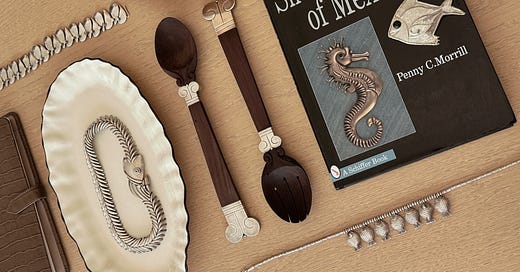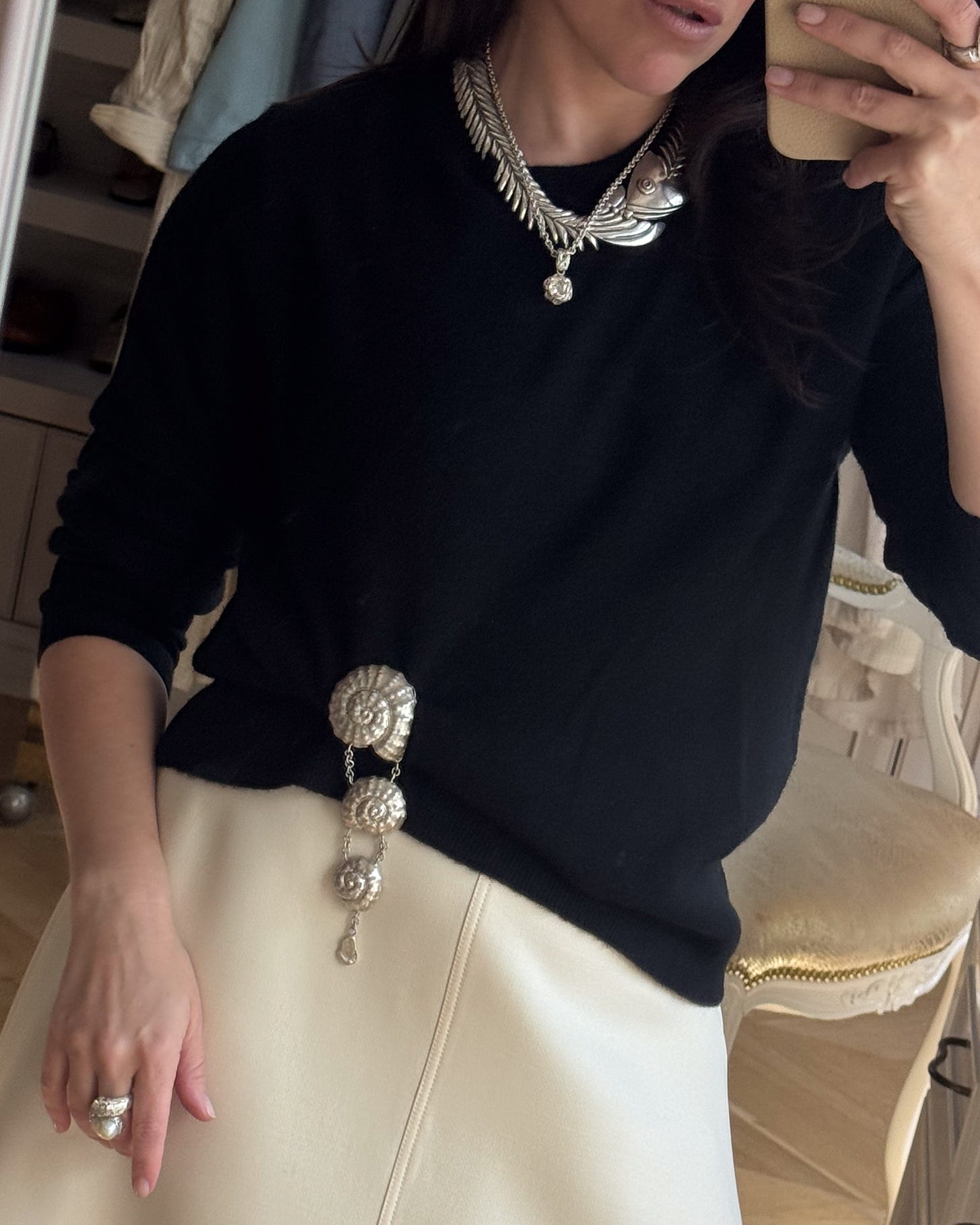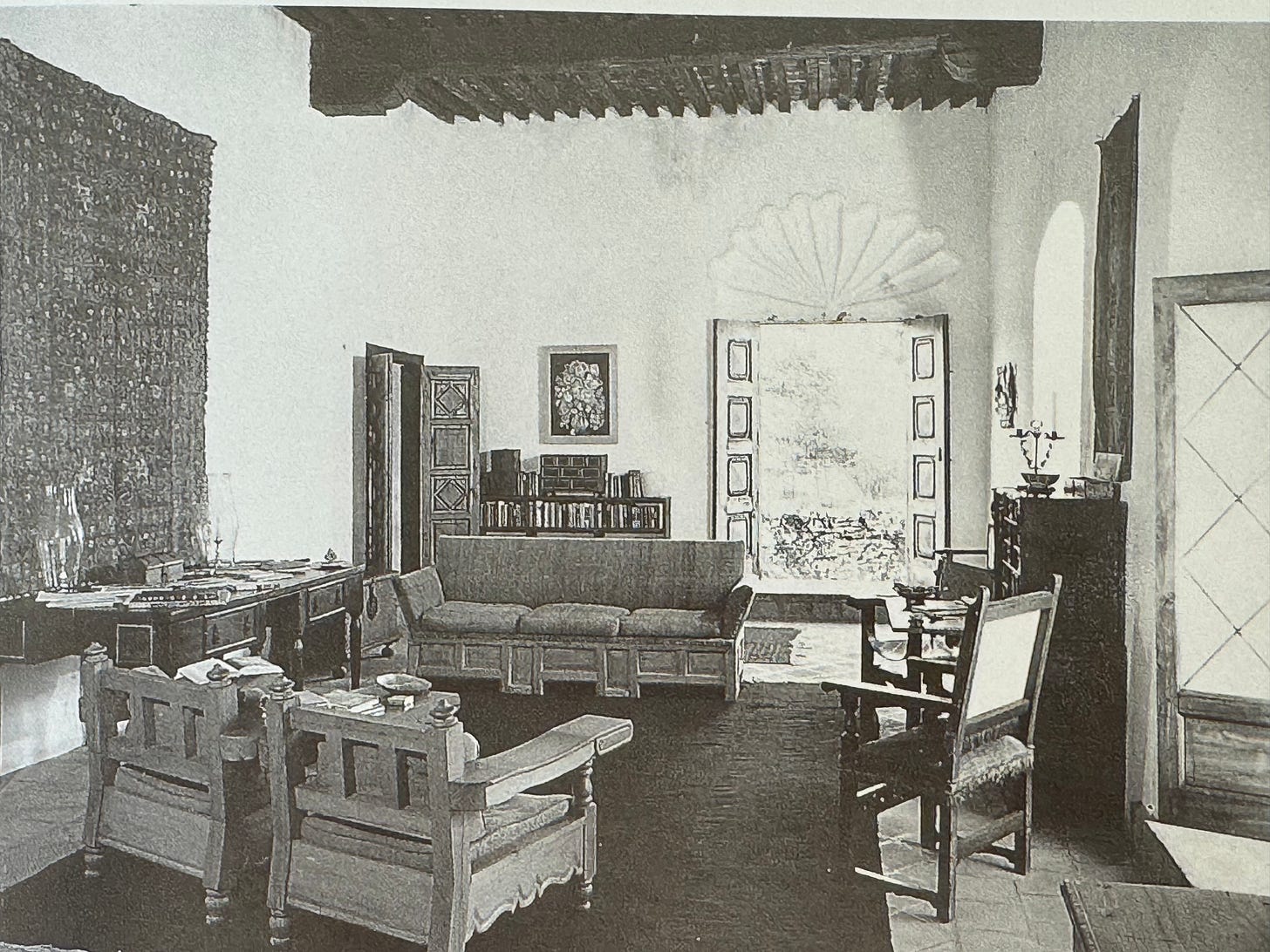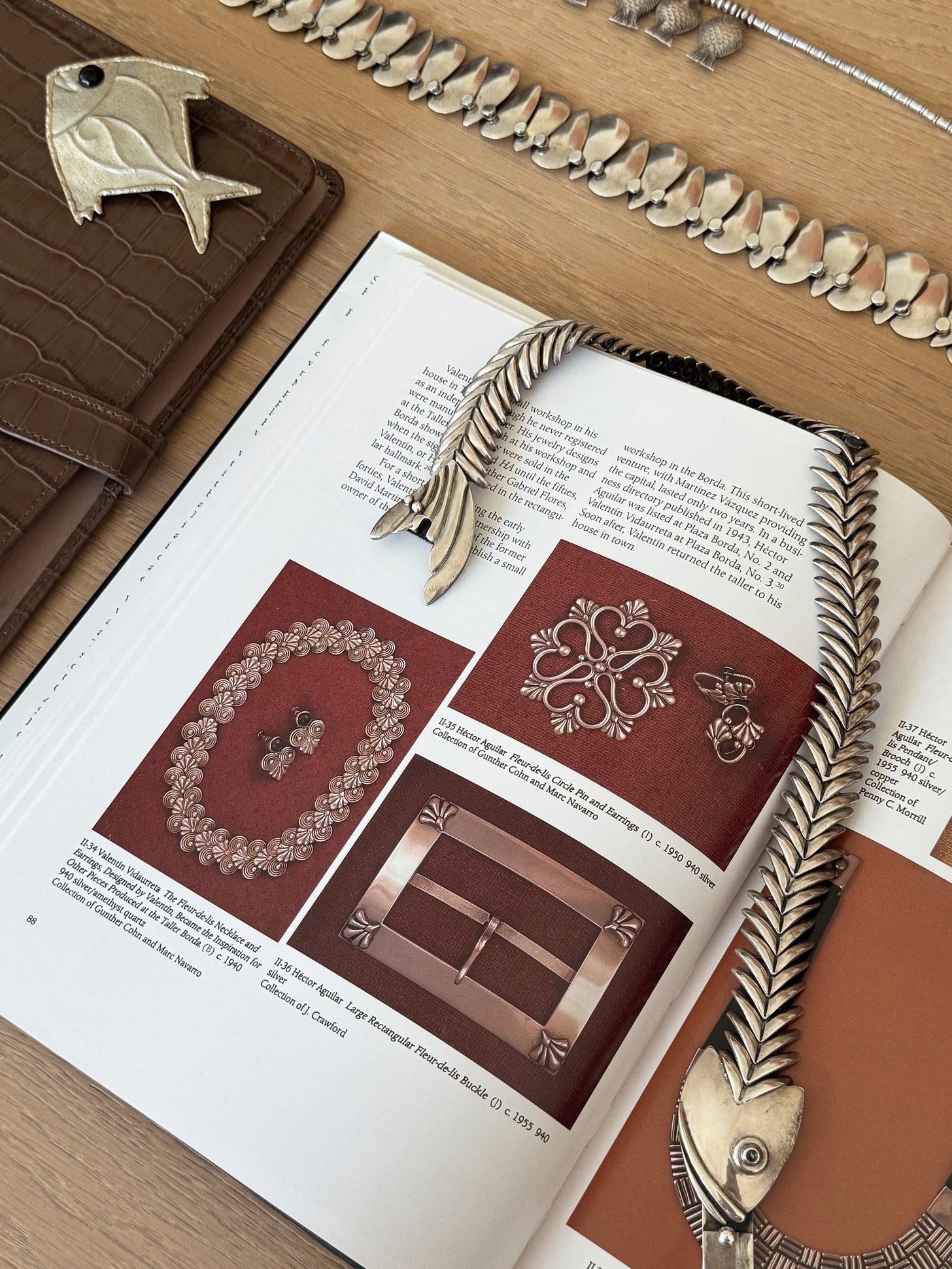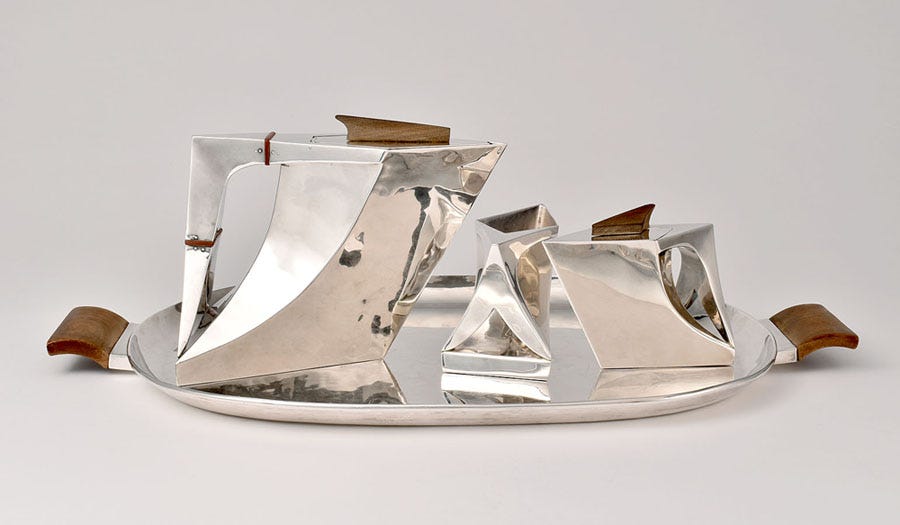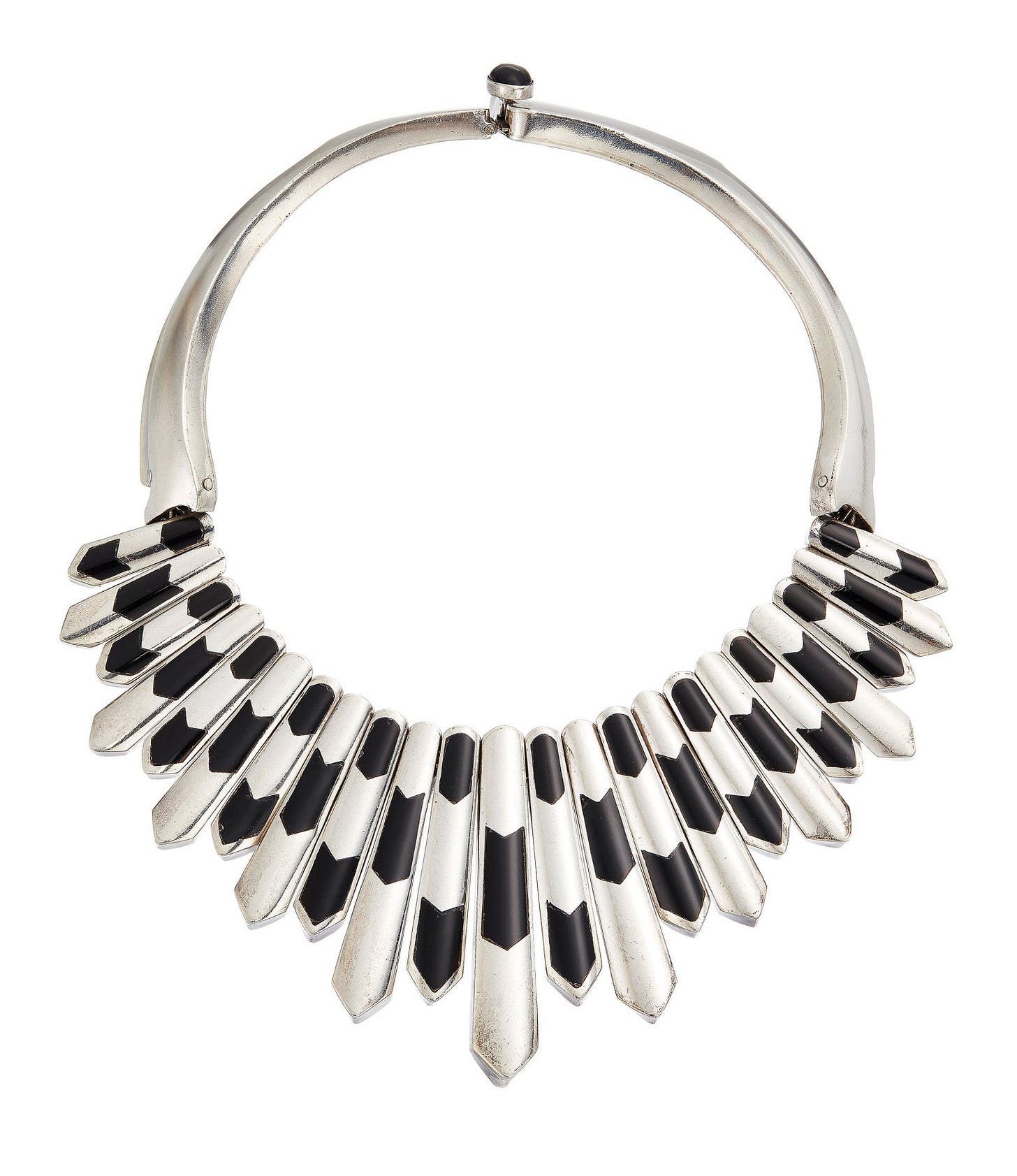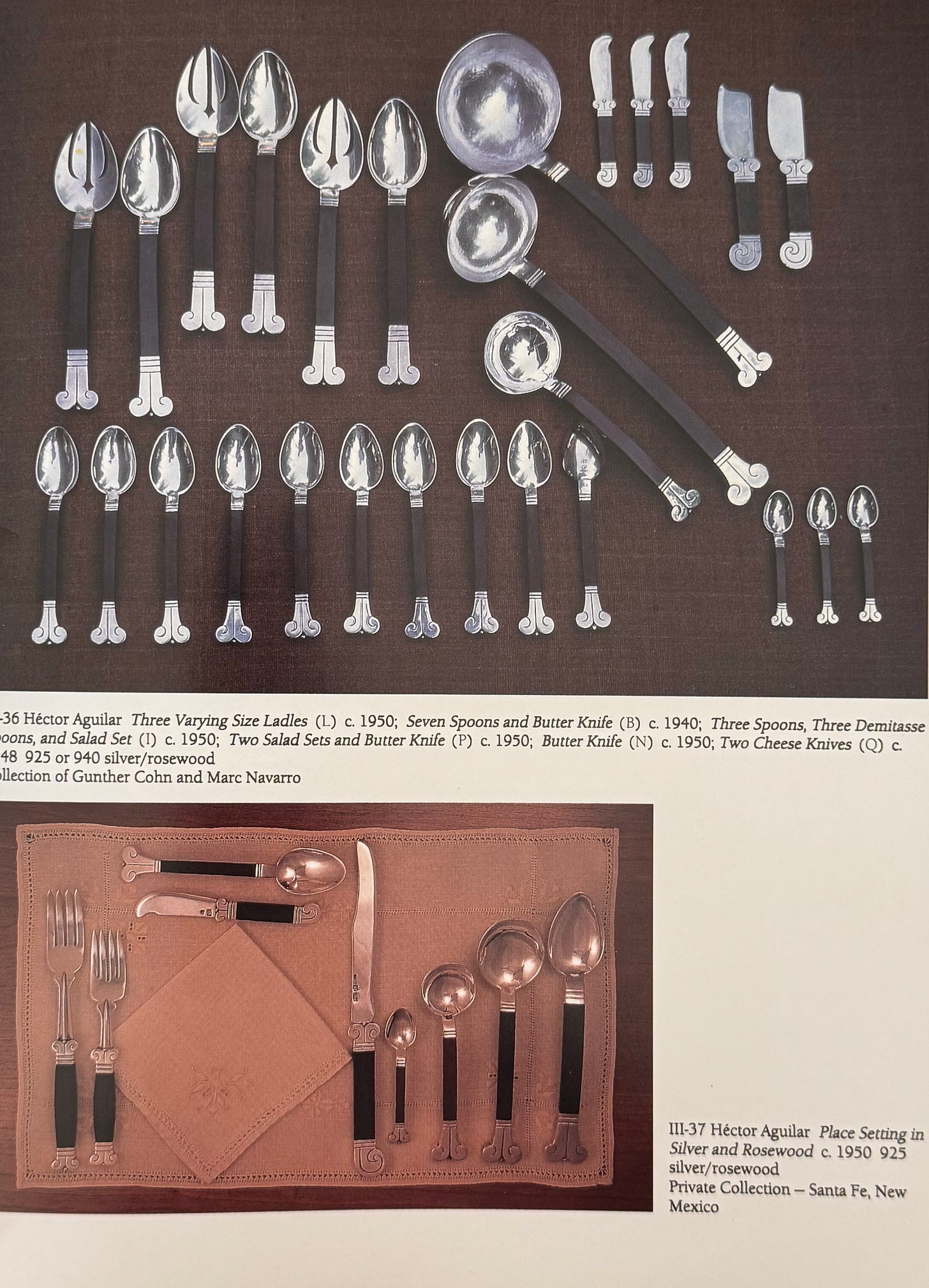Silver, Stories, and a Fish Choker: A Dive into Taxco's Magic
Whimsy with a backbone and a deep-dive sourcing guide for the jewelry and tableware of Taxco
It started with a fish choker. Chunky, jagged sterling, head and tail clasped around a neck like a silver sea creature caught mid-metamorphosis. It felt wild and weird, both of the natural world and somehow not. Whimsical, but with a backbone. I had to have it.
This was mid-winter, in the thick of my usual seasonal lull, when I tend to fight the gray with accessories that some might say belong in summer. I was on the hunt for pieces with artful irreverence. Playful, vibrant, a little strange in the best way.
Thank you for reading A Whimsical World. If you are catching up, I posted two stories last week! In the first, I wrote about why we should stop using the word ‘Timeless’ in design, explored the concept of taste, change, and how brands can better speak about design that endures. The second was my ultimate (mostly) vintage summer accessory guide.
I'm a collector at heart. I love surrounding myself with beautiful, well-made things. Objects that make me feel more creative. Part of the joy in collecting is learning the origin, the history, the inspiration behind each piece. The stories give the objects weight. They make them matter. That's what keeps me searching. I'm not just filling my space with stuff. I'm filling it with stories.
The Legacy of Taxco:
That fish choker led me down a rabbit hole to Taxco, Mexico, and its rich, fascinating tradition of silversmithing. The designs that emerged from this town in the mid-20th century feel both ancient and modern. They carry a sense of history and intention yet remain totally compelling today. It's not just the jewelry but the tableware and home objects, too. There's nothing precious or fussy about Taxco design. The pieces are strong, of the best quality, striking in their simplicity, but always full of character.

Taxco is a charming town nestled in the mountains of Guerrero, between Mexico City and Acapulco. In the 1920s, it was known for its silver mines but not for an artistic industry. That changed with William Spratling, a New York architect who helped ignite a design movement that would forever transform the town's identity.
William Spratling:
Spratling was lured to Mexico by his artist friends—Diego Rivera and Frida Kahlo among them. He first visited in the 1920s and was captivated by the country's energy, colors, and creative spirit. By 1929, he had settled in Taxco. Two years later, he opened his silver workshop, Taller de las Delicias. This marked the beginning of what would become a revival of silver craftsmanship in the region and a new era in Mexican design.
It started small. One silversmith. A few teenage assistants. But within seven years, the workshop had grown to nearly a hundred artisans. Spratling approached silversmithing as a collaborative act. His studio was a training ground, a place where design and mentorship thrived, and young silversmiths found their voices. Taller de las Delicias became an incubator for the master designers of Taxco.
Not sure how to style brooches? Check out my guide here:
The Cool Girl’s Guide to Brooches
When I started this newsletter, I promised myself I’d write about whatever my heart desired. I didn’t want to be pigeonholed into any one subject. But after countless hours writing, week after week, I have begun to feel the pressure to niche down. Art and design are the natural choice; it’s what I do, after all. But I’m resisting the urge, and sticking with my original instinct:
In the wake of a bloody revolution that had raged for a decade between 1910 and 1920, Mexico was ready to embrace its natural identity and cultural traditions. Spratling's designs were inspired by Mexico's pre-Columbian past, indigenous patterns, and colonial Mexican motifs but executed with modernist lines and proportions. Spratling believed that Mexico's past was worthy of preservation and innovation. He wasn't interested in copying Europe. He wanted to show the world that Mexican design could be forward-thinking, rooted in history, but alive with possibility.
Spratling became known as the "father of contemporary Mexican Silver." His pieces feel weighty with deliberate structural lines. There is a certain gravitas to them like they were built, not just made. He incorporated native materials such as amethyst, turquoise, coral, rosewood, and abalone into his pieces. His designs often depicted animals, both mythical and real, and incorporated masks, glyphs, and geometric patterns inspired by Aztec and Mixtec cultures. His fish resembled artifacts, and his cuffs featured soft whorls of the conch shell that wrapped around the wrist. Each piece was exotic and decadent but with technical perfection and a purity of abstract form.
Héctor Aguilar:
Spratling laid the foundation, and others built on it. One of them was Héctor Aguilar, who started as the workshop manager at Taller de las Delicias and went on to open his own studio, Taller Borda, in 1939
Aguilar's work is instantly recognizable. His distinctive style remained consistent but never static. His designs manipulate lines in a way that feels both deliberate and fluid. Whether forming the shape of a serpent or a repeating geometric pattern, he contorted, twisted, and overlapped silver into mesmerizing designs. His designs feature uncompromising abstraction with an organic quality. They pulse with a subtle rhythm, like a melody made tangible.
He was exacting about quality, especially in the purity of the silver and the precision of construction. His necklaces and bracelets are engineered like architecture. Every clasp, every hinge, is a feat of design. The pieces in my collection feel indestructible, resilient, and full of presence. Wearing them feels like putting on a layer of strength.
Valentín Vidaurreta:
Aguilar, like Spratling, believed deeply in collaboration. At Casa Borda, he provided a setting for grand-scale artistic activity. He believed that creativity breeds creativity and knew how to pull out the best from each person he employed. One of his masters and frequent collaborators was Valentín Vidaurreta.
Vidaurreta began his artistic career as a painter and grew his practice to the center of the Mexican art world. His versatility as an artist and wide-ranging interests led him to silver design. He worked with both Aguilar and Spratling but developed his own distinct style.
Vidaurreta's designs, while modern, tended towards more elaborate motifs. His jewelry often featured naturalistic renderings of flowers with swirls and flourishes. He frequently drew inspiration from his garden, translating orchids, chrysanthemums, and pomegranate blossoms into silver.
There's an Art Nouveau influence in his curves and arabesques, but it never feels borrowed. It's all refracted through a Mexican lens. His work celebrates beauty but is not overly delicate. There is a lyrical quality, a kind of ornamental grace, like a dream filtered through silver. It retains the strength, both of material and presence, that Taxco silver is known for.
Antonio Pineda:
Then there is Antonio Pineda, who may be the most architecturally elegant of them all. He came from a family of artisans, and like many of his peers, he got his start at Spratling's workshop. He trained first as a painter and sculptor, and that sculptural eye never left him. By the 1940s, he had established his own studio and quickly gained international attention.
Pineda's jewelry is sleek and sculptural, a mix of adornment and wearable architecture. His designs were clean and graphic, often featuring an evolving use of negative space. He had a strong visual rhythm, and no other jeweler in Taxco used as many costly semi-precious stones or set them with as much ingenuity, skill, and variety as Pineda. He became a darling of celebrities worldwide.
I first bought pieces from Taxco because of how they made me feel. Like they were strong, soundly built, and interesting. And if I wore them, I would be stronger, more soundly built, and more interesting. Now, knowing the history, when I wear them, I feel infinitely more creative. I am wearing a piece of history, something that belongs in a museum (and, in fact, many pieces are in a museum), but I might have paid $250. Soon after I discovered the jewelry, I stumbled upon the tableware, and that added a new level of desire. Tableware is where my heart lies, and to serve with pieces from Taxco is to invite creativity and joy into each meal.
I first fell in love with Taxco Silver because of how it made me feel—strong, whimsical, rooted in narrative. At first, I thought it was the weight of the pieces, the jagged shapes, the originality. But now I know it's also the history. When I wear them, I feel more creative, more rooted, more alive.
I'm wearing objects that carry generations of artistry, rebellion, and innovation. Each piece feels like it belongs in a museum (many are), but you can also find many at reasonable prices. And still, they hold the same magic.
The tableware and home decor are harder to find and at a higher price point, but well worth the hunt. To serve with a Taxco piece is to bring beauty and intention to the table. It's an invitation. To delight. To connect. To tell stories.
For my paid subscribers, I've done a deep dive—hours of scouring the internet—to bring you the very best of Taxco.
These are pieces that spark creativity and carry a little bit of whimsy. They're beautifully made, full of character, and built to last for generations. I've chosen them with care, with an eye for craftsmanship, originality, and that certain something you can't always name but immediately feel.
Keep reading with a 7-day free trial
Subscribe to A Whimsical World to keep reading this post and get 7 days of free access to the full post archives.


